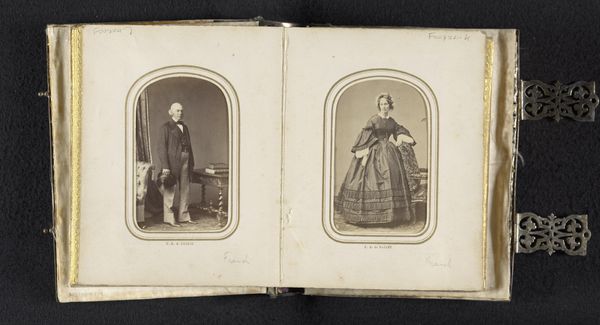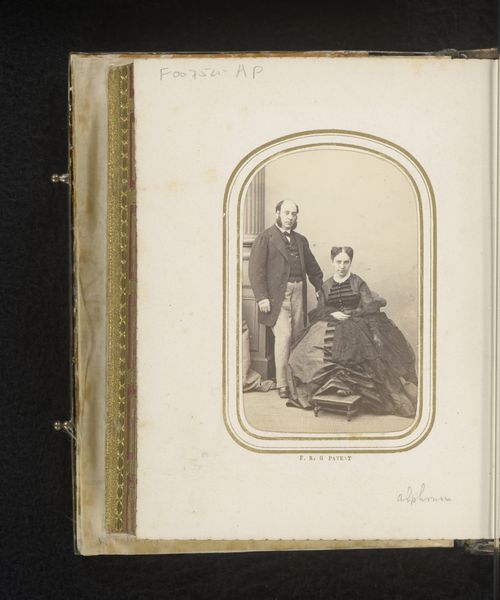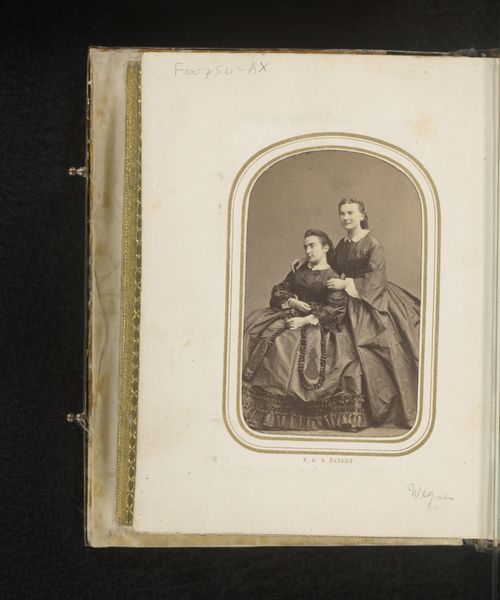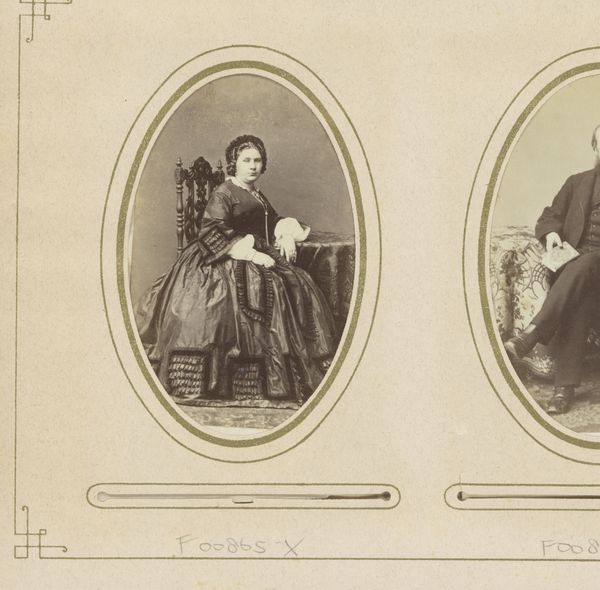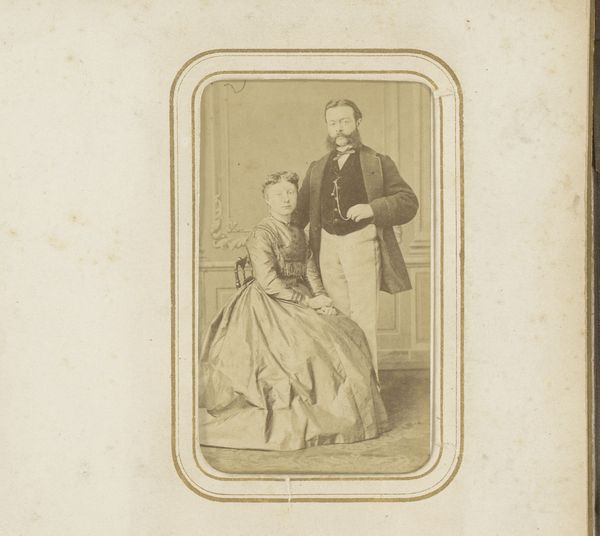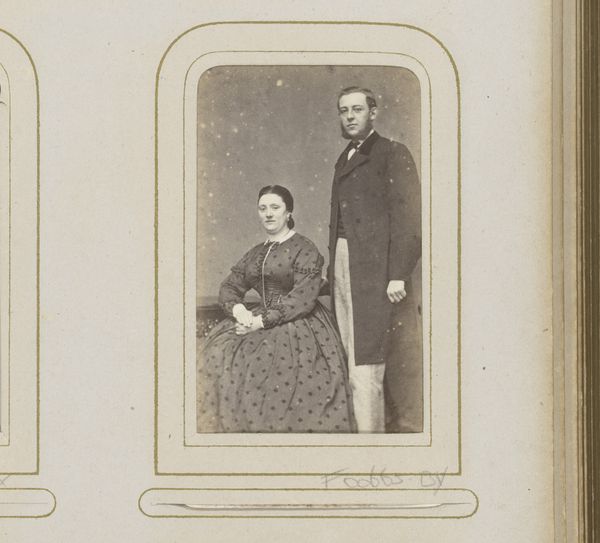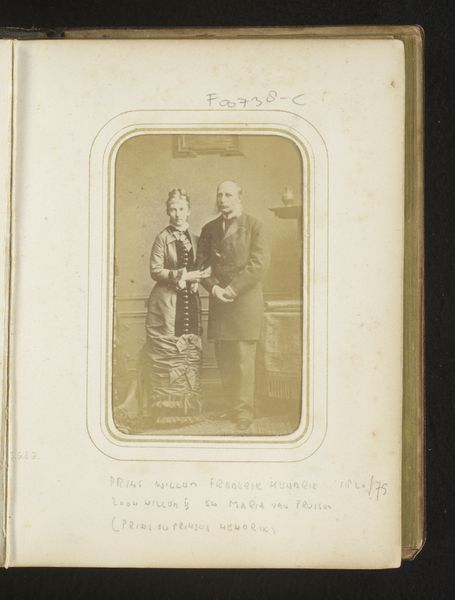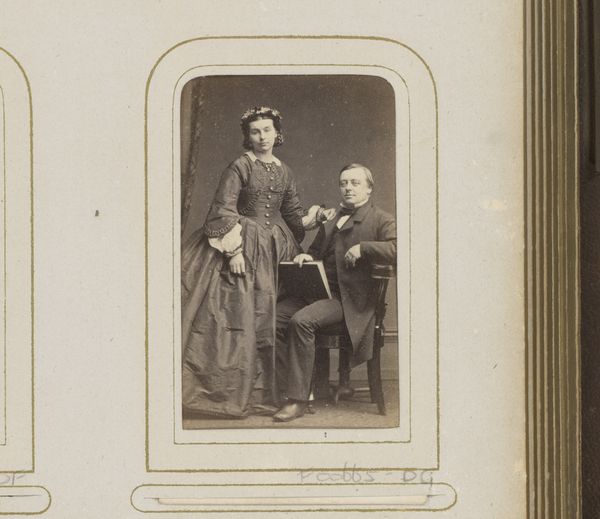![[Carte-de-Visite Album of British and European Royalty] by F. Joubert](/_next/image?url=https%3A%2F%2Fd2w8kbdekdi1gv.cloudfront.net%2FeyJidWNrZXQiOiAiYXJ0ZXJhLWltYWdlcy1idWNrZXQiLCAia2V5IjogImFydHdvcmtzL2EzY2ZhNjM4LWJhNjUtNGQyNS1hYjhiLTBjMTA1NDM4OTVmYi9hM2NmYTYzOC1iYTY1LTRkMjUtYWI4Yi0wYzEwNTQzODk1ZmJfZnVsbC5qcGciLCAiZWRpdHMiOiB7InJlc2l6ZSI6IHsid2lkdGgiOiAxOTIwLCAiaGVpZ2h0IjogMTkyMCwgImZpdCI6ICJpbnNpZGUifX19&w=3840&q=75)
[Carte-de-Visite Album of British and European Royalty] 1860s - 1870s
0:00
0:00
photography, gelatin-silver-print, albumen-print
#
portrait
#
photography
#
gelatin-silver-print
#
albumen-print
Copyright: Public Domain
Editor: This is a fascinating piece from the Metropolitan Museum of Art, a "Carte-de-Visite Album of British and European Royalty" dating from the 1860s to 1870s, employing gelatin-silver and albumen prints. The formality is striking – everything from their clothing to their rigid poses speak to another time. What’s your take on it? Curator: Well, let's consider the material conditions of production. These "cartes-de-visite" weren't just images, but commodities, products of a burgeoning photographic industry. How do you think the widespread availability of these photographic technologies shaped social relations? It democratized portraiture, yet its very access was structured by class and, therefore, power dynamics. Editor: That's an interesting way to think about it! So it wasn't just about documenting royalty, but also about making that documentation available, however selectively, as a form of consumption? Curator: Exactly! And consider the labor involved. From the photographer to the workers producing the chemicals and paper, this album represents a whole network of often invisible labour. How does focusing on the labour involved reshape our understanding of elite portraiture of the era? Editor: I hadn't really thought about the supply chain. Now I'm considering where those materials were sourced. What can you say about photography at the time this photograph was created? Curator: Mass production techniques were increasingly refined for photographic materials, reducing production cost, so who controlled these industries and means of dissemination becomes significant in evaluating visual culture during this period. The image is, in the end, the fruit of an economic structure as much as an aesthetic impulse. Editor: I hadn't thought about photography like that before. It's amazing to consider all the different layers that go into creating something like this, beyond just the subject in the photograph. Curator: Indeed, art isn't created in a vacuum. Material considerations have shaped artistic production then and continues now.
Comments
No comments
Be the first to comment and join the conversation on the ultimate creative platform.
